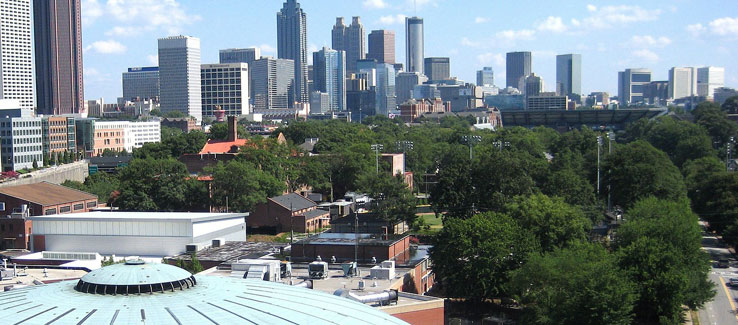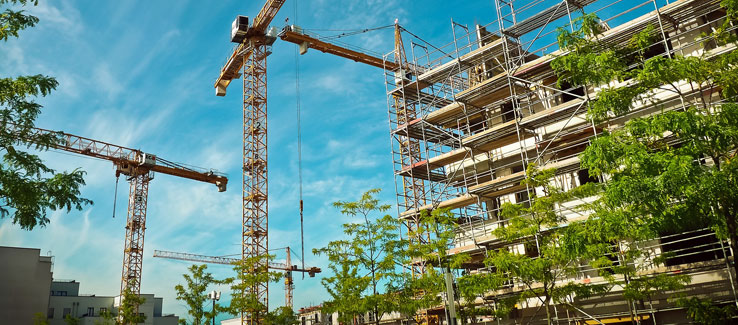
There are several dangers facing trees in your Atlanta landscape. The dense foliage within Atlanta, “the city in a forest,” is prone to facing health problems and can need your help.
Infestation, disease, and construction mishaps are causes that weaken and kill trees when they are not properly looked after. Your immediate action when a tree is in decline can be the difference in it thriving or dying.
This fasttreeremovalatlanta.com article identifies tree health symptoms and causes like construction damage, insect infestations, powdery mildew, and then offers easy to perform solutions for each of them.
Declining Tree Health Symptoms
When trees are in trouble, they typically exhibit obvious symptoms telling you that there is a much more significant problem at hand. Some of the more common symptoms requiring immediate attention are:
Dieback – This is a symptom of, soil compaction, infestation, disease, or girdling and occurs when the foliage, branches, and twigs begin to die from the outside in towards the trunk.

If not quickly addressed, large branches and entire portions of the tree will die and become brittle, potentially falling without forewarning.
To identify an insect infestation, look for entry and exit points appearing as rounded holes with either sawdust (pitch) or sap blow the hole.
Stunted Growth – When a tree is under stress from an insect infestation or disease, smaller foliage and reduced growth may occur. Often, the crown will be disproportionate with smaller and fewer leaves on one side.
If left untreated, the tree’s health will continue to decline, leaving it susceptible to multiple infestations, and eventually lead to its death.
Premature Leaf Drop or Late bloom – A deciduous tree stressed by compacted soil, severe infestation, disease, or partial girdling may drop its foliage in late summer before other trees, or may not bloom until late in the spring.
Stressed evergreen trees may lose more foliage than usual in late summer and fall, along with signs of chlorosis (yellowing of foliage).
This is an alarming sign which underscores the severity of what is happening within the tree and must be quickly addressed to save it.
Drooping Crown – A common symptom of soil compaction is when your tree’s crown appears to droop, or the foliage appears to be wilted.
This soil condition may cause irreparable damage to the tree’s root system resulting in hydraulic failure (when the tree can no longer transport water and nutrients to and from the roots) and eventual death.
Tree Problem – Construction Damage
Construction damage can be soil compaction from transiting or parked vehicles and heavy storage or waste containers left under a tree. Bark damage leading to partial or complete girdling may result from leaning equipment or being struck by vehicles.
These issues are not limited to construction sites, the integrity of the soil and trunk of your tree are vital to its survival and should always be protected.
Construction Damage Solution – The City of Atlanta has specific guidelines on tree protection for construction sites which must be implemented. The failure of a company or person to adequately protect trees on a commercial or private construction site may be met with steep fines, and in the case of a lost tree, a tree recompense and fine may be assessed.

In the case of soil compaction, it can be challenging to save a tree’s roots. Depending on the size of the tree, 15 inches to 3 feet of new topsoil may be required to counteract the effects of it.
Read more about reversing soil compaction here ecolandscaping.org/01/soil/dealing-with-soil-compaction/
In the case of bark damage and girdling, if the damage is severe enough that it cuts through the xylem and phloem around the majority or entire circumference of the trunk, the tree may already be dead.
In situations with lesser damage, bark patches have a better chance of restoring the flow of water and nutrients from the crown and roots. Uncover further information on bark damage here fasttreeremovalatlanta.com/handling-tree-bark-damage
Tree Problem – Insect Infestation
The healthier a tree is, the easier it can repel attacks from boring insects. Likewise, these pests will typically target trees in a weakened state of health. However, when the insect population grows and trees become limited, they will target and successfully invade healthy trees too.
Some beetle species will burrow into the heartwood and nest deep within the tree. Beetles carry fungal spores with them which germinate within the tree providing nutrients for their offspring and ultimately causing a fungal infection which further weakens the tree.
As their numbers grow, infestations can easily devastate entire urban landscapes, inflicting irreparable damage to multiple trees of all sizes and ages.

Insect Infestation Solution – When caught in its early stages, an insect infestation is easily managed through the use of insecticides, traps, and the removal of infected limbs or the source tree in its entirety.
In any case of an insect infestation, call a tree professional for expert advice on types of treatment and how to protect surrounding trees. The web, in addition to the insect can lead to tree disease or death. To learn more, read fasttreeremovalatlanta.com/insect-webs-tree-decay-disease-death
Tree Problem – Powdery Mildew
Powdery mildew is a fast-spreading fungal disease affecting a wide range of trees and plants. It commonly has the appearance of white powder stuck to leaves riddled with black spores.
This disease is difficult to control, as it is spread by wind, splashing water, insect, wildlife, or human activity.

In severe cases when enough foliage is covered by the disease, the host tree’s capacity to photosynthesize can be significantly reduced causing deficiencies and weakening the tree’s health, leaving it vulnerable to infestations and other infections.
Powdery Mildew Solution – Halting and preventing powdery mildew can be as easy as watering your trees. The following tips will help you quickly gain control over this disease.
• Neem Oil – Spray affected and surrounding foliage with a neem oil solution (2.5Tbsp per gallon of water) weekly.
• Home Remedy – Spray affected and surrounding foliage with a solution of 1Tbsp of baking soda and 1tsp of liquid dish soap per gallon of water.
• Garden and Pruning Equipment – All equipment used on infected plants and trees should be thoroughly washed then rinsed in a bleach solution (1/8 cup bleach per gallon of water). Alcohol may also be used in place of bleach (1 cup alcohol per gallon of water).
In cases where 25% percent or more of the foliage is infected, call a tree professional to offer suggestions for a more aggressive approach to controlling this disease.
For more on tree disease control and prevention, read fasttreeremovalatlanta.com/5-tree-shrub-disease-prevention-tips
Protecting Atlanta’s Tree Canopy
Don’t let your trees die needlessly. With so many trees in an urban setting, accidents, infections, and infestations are bound to happen, are you ready for them?
In this article, you discovered how to identify the problems and symptoms of a troubled tree, like construction damage, girdling, insect infestations, powdery mildew, and how to effectively treat each of them.
Your failure to act when your trees are injured or ill can result in their death and toppling. Avoid catastrophic damages and potential fines or recompense from the City of Atlanta by taking action while you still can.
Sources:
http://extension.uga.edu/publications/detail.html?number=B1238&title=Common%20Landscape%20Diseases%20in%20Georgia
http://newswire.caes.uga.edu/story.html?storyid=5161&story=Fig%20Pest
https://www.atlantaga.gov/Home/ShowDocument?id=1538
(404) 220-9965
(404) 220-9963
To view the orignal version of this post, visit: http://www.fasttreeremovalatlanta.com/warning-signs-problems-solutions-atlanta-trees

No comments:
Post a Comment